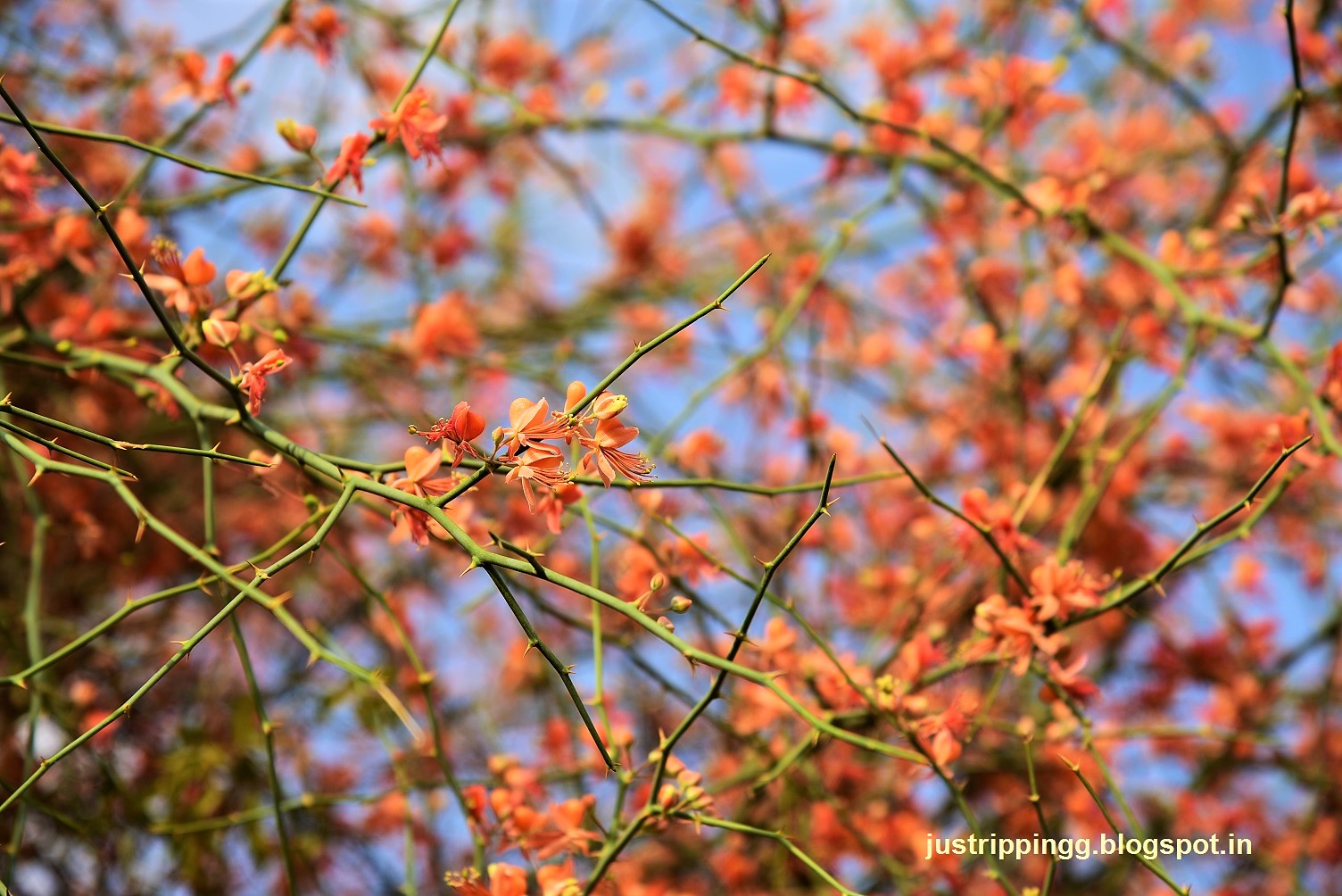Trees of Shekhawati – Part III – April 2019
Before entering Fatehpur to
look at the huge Bhartiya clan mansions, we drive past the town towards
Laxmangarh. Few kilometres away, we pull into the grounds of the magnificent
Fatehpur Bawri. The square bawdi is ringed with imposing pavilions on the
corners and walls pierced with gateways. The bawdi with a never seen before pavilion
mounted on a minar in the centre of the kund will have to wait.
 |
| View to the Kareel at Fatehpur Bawdi |
 |
| Capparis decidua in Shekhawati Rajasthan |
 |
| The Twinkling Red Rubies of Kareel Tree |
Surrounding the bawdi are
twinkling trees. The woolly trees that look like overgrown bears seem to have cast
a net at night when the twinkling red stars come down to play in the dunes of
Shekhawati. The red stars that got
entwined in the net twinkle in the bihad land all around. On a brilliant early evening as clouds float in a blue sky, this is a delightful
scene and you will spend next half hour trying to frame the Kareel trees and
their blooms against the bawri.
The flowers of Kareel trees
are as captivating as the Roheda flowers. Pradip Krishen describes them as
showy clusters and usually brick-red or pink in colour. The four petals are
long and narrow with a prominent bonnet-like flower-cup. The long stamens are
deep red and tipped with gold. A small, green ovary is borne at the end of a
long stalk. In a mass blooming bush the flowers look like a delicious red
whirlpool.
Shekhawati’s open air art
galleries in the towns are getting a run for their money by these Roheda and
Kareel flowers blooming in the surrounding scrubland. The beautiful red canvas of the Kareel flowers with the backdrop of structures look stunning. It seems a toddler given a brush
drenched in red paint has gone berserk. Sometimes, taking from the title, the
canvas seems to depict the gory blood splattered crime scene. But mostly it is
the ruby like stars that seem to twinkle.
=================================================
Essentials
Kareel (Capparis decidua)
also called Kair and Dhalu is a deciduous small tree or a large bush. The tree
in its bush form and the older grown tree looks quite like Khabbar except the
crown is a mesh of interwoven twigs with spines and absence of leaves. Before Shekhawati,
you had seen this lovely solitary tree in Qutb Complex that was just beginning
to flower. In Delhi, Kareel is common on ridge.
Kareel loves dry, sandy and
rocky habitats and can even survive fire! It has leaves for just about a month
while the function of leaves is carried out by its green twigs.
The young buds and fruits
are used to make pickle. In Western UP, where the tree enjoys association with
Lord Krishna since it is found in Mathura, Agra and Aligarh, the fruits are
called Taint or Tainti.
==================================================
There is a saying in
Sanskrit – “If the Kareel does not have leaves, how can the Spring be blamed
for it?” Trees in arid regions adopt the strategy of shedding leaves so as to
reduce water-loss. And as if to compensate the absence of leaves, nature gifts
the spiny twiggy tree with such eye-catching flowers in the Spring!
Let’s walk through the red
twinkling universe.
 |
| What else do you want - Shekhawati, Blue Skies, Fluffy Clouds, and Kareel Flowers! |
Related
Links on this Blog
If you
liked the blogpost then





























No comments:
Post a Comment